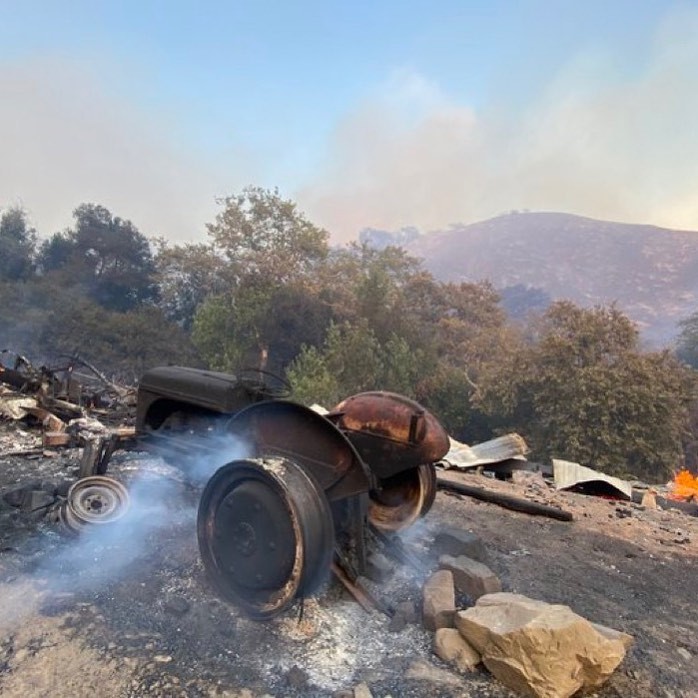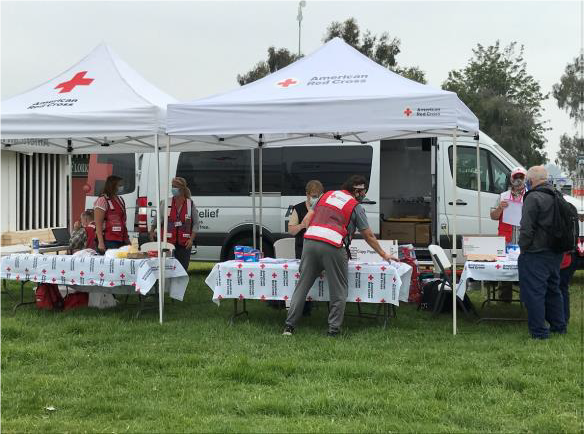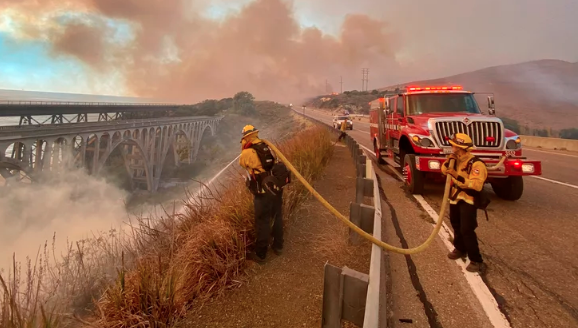Santa Barbara, CA The Alisal fire has already caused major damages in Santa Barbara County. Sparked in early October, the wildfire grew to 16,800 acres, destroying Amtrak railroads, closing parts of Highway 101, prompting evacuations, and most recently, threatening power outages. According to the Country of Santa Barbara, as of October 15th, with cooperative winds and hard work, the fire is 41% contained.
Motorists are reminded that it’s an ongoing firefighting effort and to use caution if driving on the 101. For everyone’s safety, extra law enforcement will be on patrol.

Of the 439 structures threatened, three residences and two outbuildings were destroyed. 1,731 personnel were assigned to the fire.
The Alisal fire joins the long list of fires that have ravaged California this summer. Experts say the climate crisis has created ideal weather conditions for fires to spark and spread at uncontrollable speeds.
One of the organizations that has had an impact with its disaster relief campaign is the American Red Cross. Between June and September, the nonprofit provided over 19,700 overnight stays in emergency lodgings for those affected by fires. The Red Cross also served more than 87,500 meals/snacks and deployed over 1,300 disaster workers.

A Temporary Evacuation Point (TEP) was established for those forced from their homes due to the #AlisalFire in Santa Barbara County at Dos Pueblos High School in Goleta.
Since critical wildfire weather is expected to continue in the west during this fall, these are the safety recommendations that the American Red Cross provides for wildfires:
WHAT YOU SHOULD DO NOW Have access to alerts and notifications so you can monitor conditions and receive instructions from local officials, even during a power outage. Keep track of fires near you so you can be ready to evacuate quickly. You may have only minutes to get out. Register to receive any free emergency alerts from your community. Understand your community’s plan to notify individuals with disabilities.
- Purchase a battery-powered radio to receive information from local authorities during a power outage.
- Find an outdoor water source such as a pond, well, even a swimming pool, and have a hose that can reach any area of your property.
- Create a fire-resistant zone free of leaves, debris or flammable materials for at least 30 feet out from your home.
- Regularly clean roofs and gutters.
- Make sure driveway entrances and your house number are clearly marked so fire vehicles can get to your home.
- Designate a room that can be closed off from outside air. Close all doors and windows. Set up a portable air cleaner to keep indoor pollution levels low when smoky conditions exist.
- Use fire-resistant materials to build, renovate or make repairs.
- Post emergency phone numbers by every phone in your house and make sure everyone has those numbers in their cell phones.
- Download the free Red Cross app “emergency” to help keep you and your loved ones safe with real-time alerts, open Red Cross shelter locations, and safety advice on wildfires and other emergencies.
BE PREPARED TO EVACUATE AT A MOMENT’S NOTICE and obey all evacuation orders from officials. Follow these steps (if time allows):
- Shut all windows and doors. Remove flammable window shades, curtains and close metal shutters.
- Move flammable furniture to the center of the room, away from windows and doors.
- Shut off gas at the meter; turn off pilot lights. Shut off the air conditioning.
- Gather up flammable items from the exterior of the house and bring them inside (patio furniture, toys, trash cans).
- Turn off propane tanks. Move propane BBQ appliances away from structures.
- Don’t leave sprinklers on or water running, they can affect critical water pressure.
- Back your loaded car into the driveway and keep all doors and windows closed.
- Ensure your emergency supplies kit is in your vehicle.
- Locate your pets and take them with you.
Check out their full press release here.
About the American Red Cross
The American Red Cross shelters, feeds and provides comfort to victims of disasters; supplies about 40% of the nation’s blood; teaches skills that save lives; distributes international humanitarian aid; and supports veterans, military members and their families. The Red Cross is a nonprofit organization that depends on volunteers and the generosity of the American public to deliver its mission. For more information, please visit redcross.org or cruzrojaamericana.org, or visit on Twitter at @RedCross.





